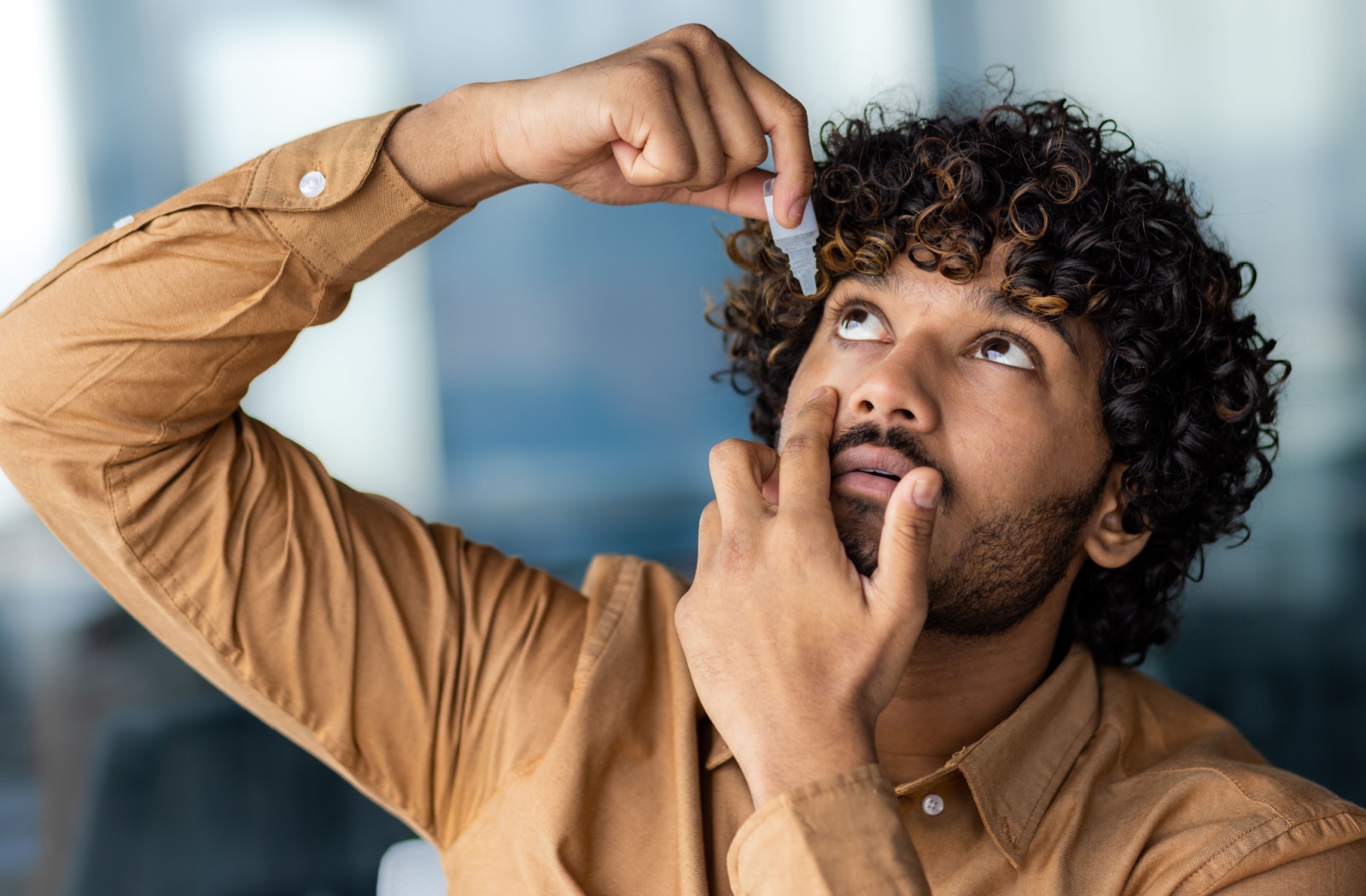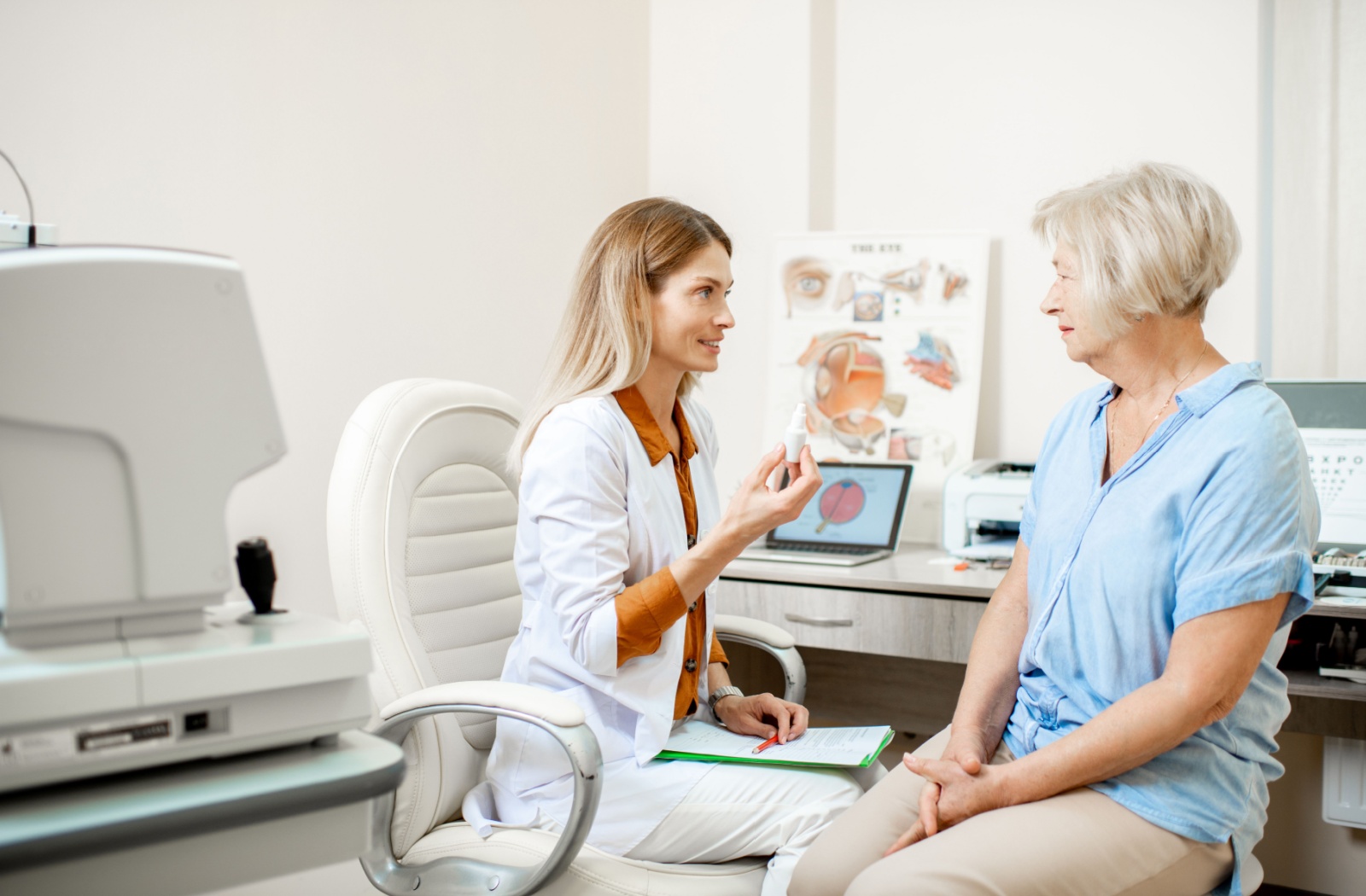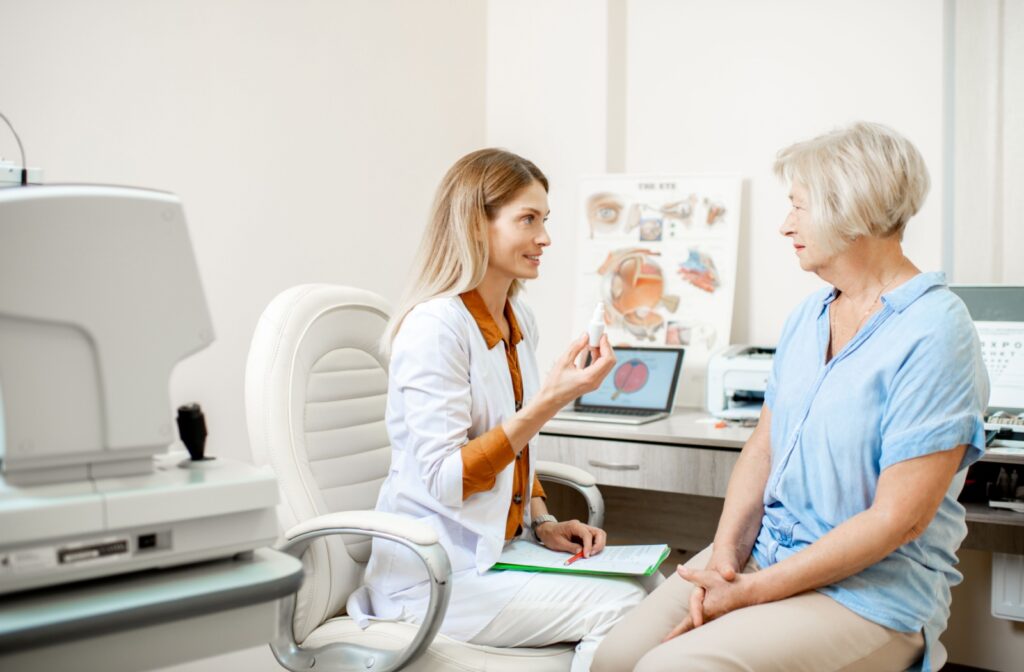In our fast-paced world, contact lenses have become a go-to solution for millions seeking clear vision without the hassle of glasses. But with convenience comes responsibility—especially when it comes to eye care. For example, you can use eye drops with contacts, but they need to be formulated for contact lens use if you’re using them while wearing your lenses.
A person might need to use eye drops for many reasons, from dry eyes to allergies. Most eye drops are clearly marked whether they’re safe for use with contact lenses, but you should consult with your eye doctor if you’re ever unsure. They can help direct you on the type of eye drops you should be using and which ones are suitable for use with your lenses.
What Are Eye Drops?
Eye drops are liquid solutions designed to be administered directly into the eye. They serve a variety of functions, from lubricating dry eyes to delivering medication. Available in prescription and over-the-counter (OTC) options, eye drops can be a boon for maintaining eye health.
Eye drops deliver active ingredients directly to the eye’s surface. Depending on their formulation, they can provide immediate relief or sustained effects over time. Some eye drops mimic natural tears, while others contain antihistamines or vasoconstrictors to address specific symptoms.
Types of Eye Drops
There are several types of eye drops, each serving a specific purpose:
- Lubricating eye drops (artificial tears) aim to relieve dryness
- Allergy eye drops tackle symptoms like itching and redness
- Anti-redness eye drops can reduce the appearance of bloodshot eyes
- Medication eye drops treat conditions like glaucoma or infections
Understanding the function of each type helps you choose the right one for your needs.
Why Use Eye Drops with Contacts?
You may need or want to use eye drops while wearing contact lenses for several reasons.
Dry Eye Relief
Contact lenses can sometimes exacerbate dry eye symptoms, making it uncomfortable to wear them throughout the day. Lubricating eye drops, often called rewetting drops, can provide much-needed moisture, easing dryness and improving comfort.
Lens Hydration
Keeping your lenses hydrated is crucial for maintaining clarity and comfort. Eye drops formulated for contact lenses help keep your lenses moist, reducing the likelihood of irritation and blurry vision.
Enhanced Comfort
Wearing contact lenses for extended periods can result in discomfort. Eye drops designed for contact lens users can alleviate this by providing a cushion of hydration and lubrication, ensuring your lenses feel comfortable all day.
Which Eye Drops Are Safe for Contacts?
Not all eye drops are suitable for use with contact lenses. You must remove your contacts before administering the eye drops or use a contact lens-appropriate solution.
Ingredients to Avoid
Some formulations contain preservatives or chemicals that can negatively interact with contact lenses. Ingredients like benzalkonium chloride (BAK) and thimerosal can cause irritation to both eyes and lenses.
Compatible Ingredients
Look for eye drops specifically labeled as safe for use with contact lenses. These formulations typically contain gentle, preservative-free ingredients that won’t interfere with your lenses. Common safe ingredients include sodium hyaluronate and polyethylene glycol.

Using Eye Drops with Contacts Safely
There are a few things to consider when using eye drops with contact lenses.
Proper Application
Applying eye drops while wearing contacts is straightforward but requires a bit of care:
- Wash your hands thoroughly to prevent transferring any dirt or bacteria to your eyes.
- Tilt your head back slightly, pull down your lower eyelid, and instill one or two drops into the eye.
- Blink a few times to distribute the drops evenly.
- Repeat in each eye according to your eye doctor’s and manufacturer’s instructions.
Hygiene Practices
Maintaining good hygiene is crucial when using eye drops with contacts. Never touch the dropper tip on any surface, including your eye, to avoid contamination. Store your eye drops in a cool, dry place and dispose of them after the recommended period, usually 30 days after opening.
Frequency of Use
Follow the instructions provided with your eye drops regarding the frequency of use. Overusing eye drops can lead to dependency or worsen certain symptoms. If you’re unsure, consult your optometrist for personalized advice.
Discuss Your Eye Drop Needs with Your Optometrist
Using eye drops with contacts is possible and beneficial for enhancing comfort and eye health. By choosing the right type of eye drops and following proper application and hygiene practices, you can enjoy clear, comfortable vision all day long.
One important thing to consider is your need for eye drops, though. If you find that you constantly need to use eye drops, there could be an underlying reason. Booking an exam with your eye doctor may be beneficial, rather than simply targeting the symptoms with OTC eye drops.
Call our team at The Eye Avenue to schedule an appointment. One of our experienced eye doctors can discuss your symptoms, examine your eyes, and offer personalized advice to keep your eyes comfortable and vision clear.




